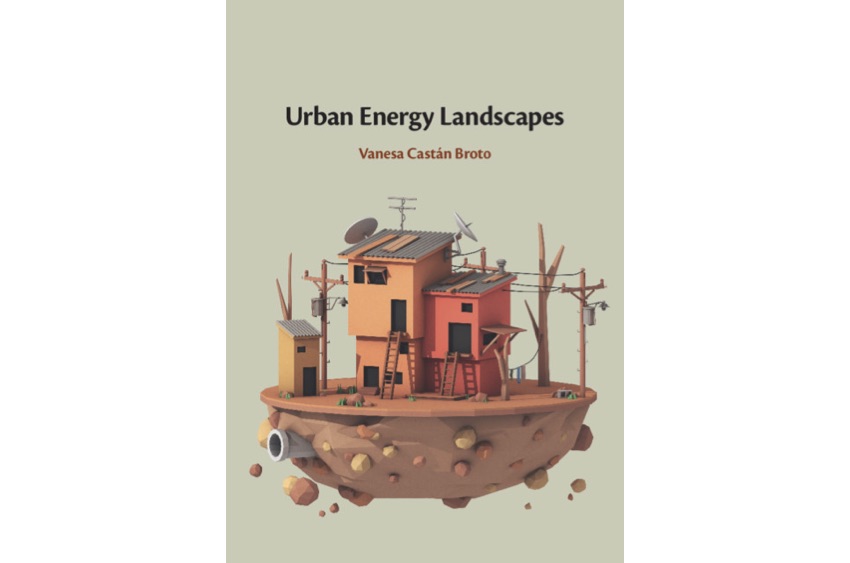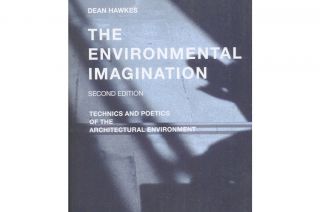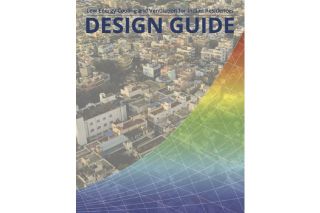
www.buildingsandcities.org/insights/reviews/urban-energy-landscapes-review.html
Urban Energy Landscapes

by Vanesa Castán Broto. Cambridge University Press, 2019, ISBN: 9781108297868
Shula Goulden (Tel
Aviv University) explores how Urban Energy Landscapes can help to capture the
heterogeneity of urban energy infrastructures, and how these need to change to
tackle the challenges of a changing climate.
What radical transformations do urban energy infrastructures need to undergo in an era of climate change? Urban Energy Landscapes rises to the formidable challenge of making sense of this complex set of issues. The concept of the 'urban energy landscape' put forward by the book represents the 'connective tissue' (p.39) between energy use (including light, heat, mobility and communications), urban form and everyday practices that are unique to each city. This is significant as a grounding in how energy-related infrastructures develop and function can inform how shifts might tangibly occur in the future. Castán Broto presents a clear premise about the highly contingent, contextualized nature of urban energy landscapes. For effective low-carbon transitions and their appropriate governance, it is necessary to understand the socio-material relationships around infrastructure, for example how cooking practices mediate planning intent in household fuel choices, or how colonialist histories shape disparities in infrastructure provision. This book emphasizes the heterogeneity of urban worlds as a counterpoint to homogenizing discourses on energy infrastructure. The problematique is understanding and framing the required transitions in the context of different cities requiring different relationships and different pathways.
To tackle these large questions, Castán Broto offers three succinct sections. The first delves into the theory of urban energy landscapes. It provides a thorough overview of existing literature on the politics of urban infrastructure, urban political ecology and agency, and argues for the co-evolution of social practices, technology, and the built environment as well as the ecosystems that sustain them. From this emerges Castán Broto's conceptualization of urban energy landscapes as a dynamic palimpsest of flows of energy resources and human energy practices, or 'energy choreographies'. This theoretical perspective, drawing also on Ingold's theorization of the landscape, is the basis for a new empirical method that underpins the project, that of walking. Conducted alone or collectively with residents, the author presents walking as a means of investigating unfamiliar socio-material landscapes and understanding the changes that take place at the scale of everyday tasks. Seeing practices, such as informal hook-ups to electricity networks or the fuel choices of mobile food vendors, helps to illustrate how what we grandly describe as urban energy transitions are also shaped by individual actions.
The second section is empirical, with case studies of four very different cities (Maputo, Bangalore, Hong Kong and Concepción). As the conceptual framework would suggest, the studies highlight multi-faceted aspects of the energy landscape, including colonial planning histories, current-day anthropologies of domestic fuel use, and the professional biases of public administration. Multiple narratives of energy landscapes emerge between large infrastructure projects and local knowledge and practices, the formal and informal. The author's rich descriptions reinforce the claim that infrastructures need to be situated within their unique urban history. The four case studies follow consistent sub-sections including the co-evolution of energy services and the urban fabric, energy flows, choreographies of energy use and governing energy. These provide a template that could be used for studying other cities with the same approach.
The third section ties together the case studies and theory to discuss urban energy transitions in a more normative way. It challenges various existing assumptions about transitions, e.g. the connection made between urbanization and electrification and its implications for the urban poor. This illustrates how purposeful plans and interventions can overlook everyday practices. Encompassing these different scales, the book is fundamentally a discussion about the nature of distributed agency in the energy landscape. It convinces us that understanding more about agency is critical to the ability to govern energy transitions. As the author notes, agency is 'central to any collective project of a future under climate change' (p.200).
While it delves deeply into theories and concepts, one of the most attractive aspects of the book is that it continually returns to its first rationale: to provide a deep understanding of and insight into the governance of low-carbon transformations in cities. For example, Chapter 3 emphasizes that the concept of the 'urban energy landscape' is intended to resonate with the challenge of advancing energy transitions. This sits in contrast with other investigations of energy landscapes that place more emphasis on changes to the landscape and less on the implications for sustainable energy management. The exploration of actor-network theory, and its critics, is similarly directly related to a discussion of distributed agency and understanding what and who can bring about change.
It is refreshing to have a book that is goal-oriented, without detracting from its treatment and review of relevant literature. For researchers, teachers and students, it offers a coherent, robust perspective on many relevant theorists involving urban politics, infrastructure and ecology. Together with the empirical case studies, this offers an intellectually rich approach which moves our collective understanding forward. Moreover it is highly readable, integrating perspectives from the literature and the author's own research journey and motivations.
The book also serves as a reminder of how theoretical development regarding cities can provide insights into advancing concrete agendas. It provides an alternative to prevalent policy perspectives on social and technical change that have contributed to the dominance of techno-economic solutions. For policy-makers and planners, the thesis of the book should open the door to a more complex perspective on transitions and a broader understanding of the agents and settings whose interactions need to be considered. All of those with a stake in governing energy transitions should engage with the clearly articulated ideas in this book: the complexity and contexts, the narratives on transitions and how to achieve them.
Latest Peer-Reviewed Journal Content
Acceptability of sufficiency consumption policies by Finnish households
E Nuorivaara & S Ahvenharju
Key factors for revitalising heritage buildings through adaptive reuse
É Savoie, J P Sapinski & A-M Laroche
Cooler streets for a cycleable city: assessing policy alignment
C Tang & J Bush
Understanding the embodied carbon credentials of modern methods of construction
R O'Hegarty, A McCarthy, J O'Hagan, T Thanapornpakornsin, S Raffoul & O Kinnane
The changing typology of urban apartment buildings in Aurinkolahti
S Meriläinen & A Tervo
Embodied climate impacts in urban development: a neighbourhood case study
S Sjökvist, N Francart, M Balouktsi & H Birgisdottir
Environmental effects of urban wind energy harvesting: a review
I Tsionas, M laguno-Munitxa & A Stephan
Office environment and employee differences by company health management certification
S Arata, M Sugiuchi, T Ikaga, Y Shiraishi, T Hayashi, S Ando & S Kawakubo
Spatiotemporal evaluation of embodied carbon in urban residential development
I Talvitie, A Amiri & S Junnila
Energy sufficiency in buildings and cities: current research, future directions [editorial]
M Sahakian, T Fawcett & S Darby
Sufficiency, consumption patterns and limits: a survey of French households
J Bouillet & C Grandclément
Health inequalities and indoor environments: research challenges and priorities [editorial]
M Ucci & A Mavrogianni
Operationalising energy sufficiency for low-carbon built environments in urbanising India
A B Lall & G Sethi
Promoting practices of sufficiency: reprogramming resource-intensive material arrangements
T H Christensen, L K Aagaard, A K Juvik, C Samson & K Gram-Hanssen
Culture change in the UK construction industry: an anthropological perspective
I Tellam
Are people willing to share living space? Household preferences in Finland
E Ruokamo, E Kylkilahti, M Lettenmeier & A Toppinen
Towards urban LCA: examining densification alternatives for a residential neighbourhood
M Moisio, E Salmio, T Kaasalainen, S Huuhka, A Räsänen, J Lahdensivu, M Leppänen & P Kuula
A population-level framework to estimate unequal exposure to indoor heat and air pollution
R Cole, C H Simpson, L Ferguson, P Symonds, J Taylor, C Heaviside, P Murage, H L Macintyre, S Hajat, A Mavrogianni & M Davies
Finnish glazed balconies: residents' experience, wellbeing and use
L Jegard, R Castaño-Rosa, S Kilpeläinen & S Pelsmakers
Modelling Nigerian residential dwellings: bottom-up approach and scenario analysis
C C Nwagwu, S Akin & E G Hertwich
Mapping municipal land policies: applications of flexible zoning for densification
V Götze, J-D Gerber & M Jehling
Energy sufficiency and recognition justice: a study of household consumption
A Guilbert
Linking housing, socio-demographic, environmental and mental health data at scale
P Symonds, C H Simpson, G Petrou, L Ferguson, A Mavrogianni & M Davies
Measuring health inequities due to housing characteristics
K Govertsen & M Kane
Provide or prevent? Exploring sufficiency imaginaries within Danish systems of provision
L K Aagaard & T H Christensen
Imagining sufficiency through collective changes as satisfiers
O Moynat & M Sahakian
US urban land-use reform: a strategy for energy sufficiency
Z M Subin, J Lombardi, R Muralidharan, J Korn, J Malik, T Pullen, M Wei & T Hong
Mapping supply chains for energy retrofit
F Wade & Y Han
Operationalising building-related energy sufficiency measures in SMEs
I Fouiteh, J D Cabrera Santelices, A Susini & M K Patel
Promoting neighbourhood sharing: infrastructures of convenience and community
A Huber, H Heinrichs & M Jaeger-Erben
New insights into thermal comfort sufficiency in dwellings
G van Moeseke, D de Grave, A Anciaux, J Sobczak & G Wallenborn
'Rightsize': a housing design game for spatial and energy sufficiency
P Graham, P Nourian, E Warwick & M Gath-Morad
Implementing housing policies for a sufficient lifestyle
M Bagheri, L Roth, L Siebke, C Rohde & H-J Linke
The jobs of climate adaptation
T Denham, L Rickards & O Ajulo
Structural barriers to sufficiency: the contribution of research on elites
M Koch, K Emilsson, J Lee & H Johansson
Disrupting the imaginaries of urban action to deliver just adaptation [editorial]
V Castán-Broto, M Olazabal & G Ziervogel
Nature for resilience reconfigured: global- to-local translation of frames in Africa
K Rochell, H Bulkeley & H Runhaar
How hegemonic discourses of sustainability influence urban climate action
V Castán Broto, L Westman & P Huang
Fabric first: is it still the right approach?
N Eyre, T Fawcett, M Topouzi, G Killip, T Oreszczyn, K Jenkinson & J Rosenow
Social value of the built environment [editorial]
F Samuel & K Watson
Understanding demolition [editorial]
S Huuhka
Data politics in the built environment [editorial]
A Karvonen & T Hargreaves



Latest Commentaries
Decolonising Cities: The Role of Street Naming
During colonialisation, street names were drawn from historical and societal contexts of the colonisers. Street nomenclature deployed by colonial administrators has a role in legitimising historical narratives and decentring local languages, cultures and heritage. Buyana Kareem examines street renaming as an important element of decolonisation.
Integrating Nature into Cities
Increasing vegetation and green and blue spaces in cities can support both climate change mitigation and adaptation goals, while also enhancing biodiversity and ecological health. Maibritt Pedersen Zari (Auckland University of Technology) explains why nature-based solutions (NbS) must be a vital part of urban planning and design.